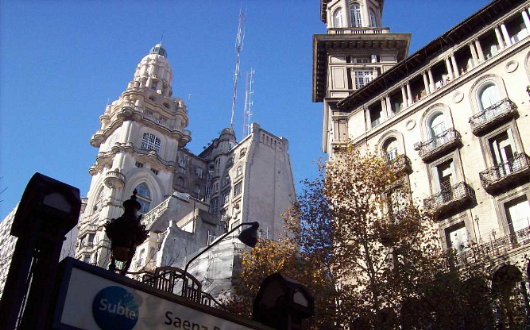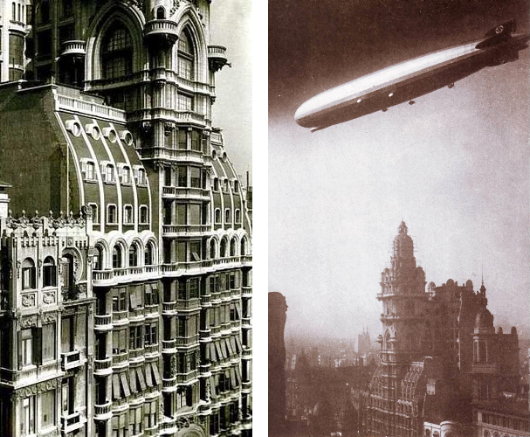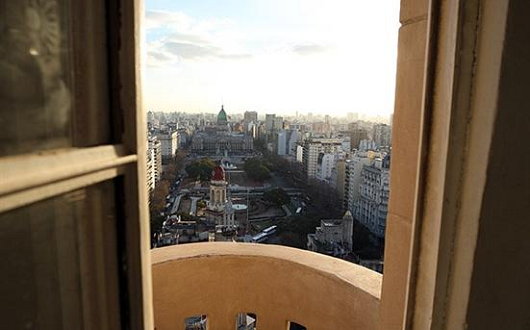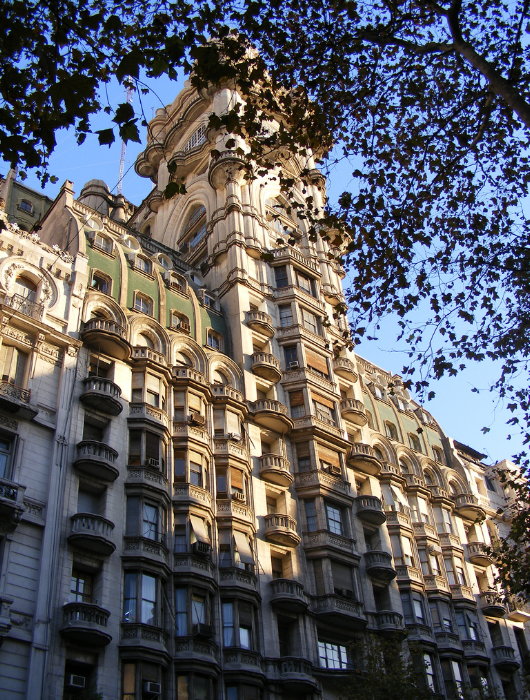
About Andrew Cusack
 Writer, web designer, etc.; born in New York; educated in Argentina, Scotland, and South Africa; now based in London.
Writer, web designer, etc.; born in New York; educated in Argentina, Scotland, and South Africa; now based in London. read more
News
Blogs
Reviews & Periodicals
Arts & Design
World
France
Mitteleuropa
Knickerbockers
Argentina
The Levant
Africa
Cape of Good Hope
Netherlands
Scandinavia
Québec
India
Muscovy
Germany
Academica
Monument to the Latin Genius
The Palacio Barolo, Avenida de Mayo, Buenos Aires

THE PROSPECT WAS horrifying. The year was 1919, and Europe had only just brought to an end an orgy of self-destruction lasting several years. The negotiations to conclude a peace treaty at Versailles were ongoing, but from abroad it looked as if the continent had descended into a trend of violence, decline, and destruction. That year, Luis Barolo, an Italian textiles manufacturer who had immigrated to Argentina, commissioned his fellow-countryman Mario Palanti to design a fascinating and mysterious structure as a monument to “the Latin Genius” Dante Alighieri — a repository in the New World for the poet’s legacy as the continent that gave him birth slid into oblivion.
The Palacio Barolo is a tower on the Avenida de Mayo, the Buenos Aires boulevard connecting the Plaza de Mayo to the National Congress. Constructed between 1919 and 1923, the lobby of the tower is actually an arcade connecting the avenue to the Calle Hipólito Yrigoyen. It is strangely appropriate that this great edifice intended to honour and perpertuate the Old World’s legacy in the New is part cenotaph, part monument, part office tower — a uniquely American twist on a European inheritance.

The architect Palanti incorporated a Dantean numerology and mysticism into his design. For example, the building’s twenty-two storeys are spread over a total height of 100 metres (328 feet), one metre for each canto of the Divine Comedy. (It was the tallest building in South America until the Kavanagh was completed). On a whole, it is divided into a tripartite schematic inspired by the Divine Comedy: the basement and ground floor represent Hell, floors 1–14 represent Purgatory, and floors 15–22 represent Heaven. The axis of the building aligns perfectly with the Southern Cross constellation at around 7:30 pm in the early days of June, when Dante is believed to have been born.
The dome at the top, inspired by the Rajarani temple at Bhubaneswar, was designed to hold an ossuary containing the bones of Dante Alighieri himself, but Barolo was unable to convince the Italians to give them up. Indeed, his bones had remained hidden for centuries in order to prevent feuding over where to house them, and only came out of hiding a few decades before the Palacio Barolo was conceived.

Amusingly, an online travel guide from the BBC claims that the Palacio Barolo “inspired Dante’s Inferno”, not the other way around — an interesting problem for the time-space continuum to be sure.
Across the River Plate in the Uruguayan capital of Montevideo, the Barolo has a cousin in the Palacio Salvo, also designed by Palanti before he returned to his native Italy, where he died in 1930. Mysteriously, all the plans to the tower on the Avenida de Mayo disappeared after the building’s completion, so the Palacio Barolo may still contain secrets undiscovered to this day.

Search
Instagram: @andcusack
Click here for my Instagram photos.Most Recent Posts
- Patrick in Parliament March 18, 2024
- Articles of Note: 13 March 2024 March 13, 2024
- Cambridge March 9, 2024
- Taken on Trust March 4, 2024
- Immanuel on the Green March 2, 2024
Most Recent Comments
Book Wishlist
Monthly Archives
Categories



Andrew …
I see an airship with Nazi insignia over BA in one of your images in this article … We always hear of the airships that crossed the Atlantic to the USA, but we never hear of them elsewhere.
A quick cursory Web search reveals something I knew nothing about—if you click on this link: http://www.airships.net/lz127-graf-zeppelin/history and then scroll down to “South American Service”, you will be enlightened.
Thanks for helping me ameliorate my Argentine itinerary by adding another incredible location … obviously I will be visiting the Palacio Barolo. (I see the building in some of my father’s photos when he visited Buenos Aires in service on the H.M.S. Exeter during its RN tours from 1937 to 1939).
Rumuunj
LIMBURGIA